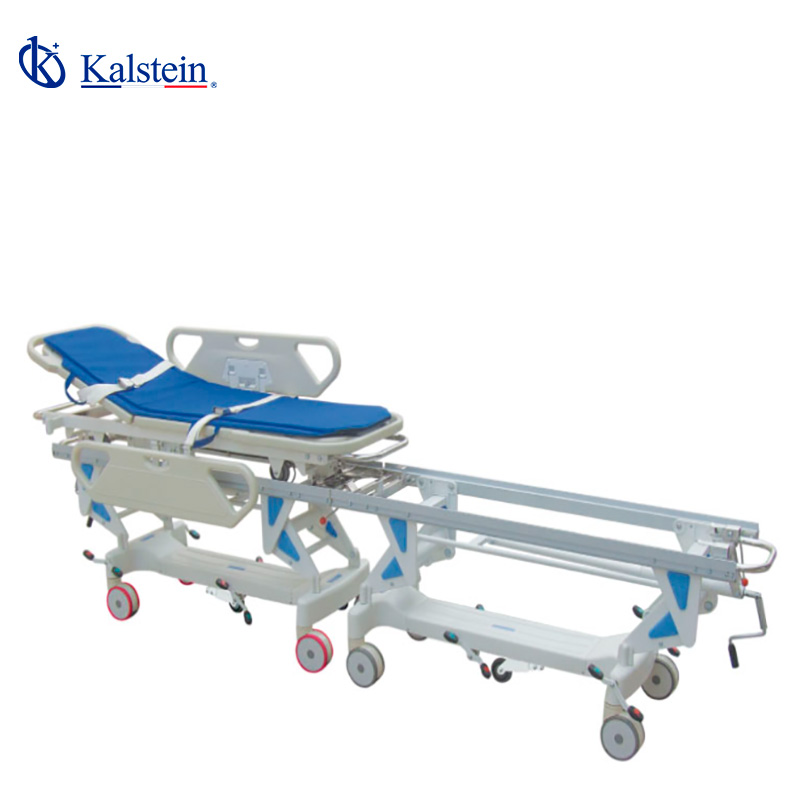Patient transport is a crucial aspect of healthcare, and the quality of transfer stretchers can significantly influence health outcomes.
The medical transfer stretchers line has emerged as an innovative and efficient solution, revolutionizing the way patients are moved within hospitals and between different healthcare facilities. This article details the benefits, unique features, and positive impact of these stretchers.
Are you yearning for top-tier medical equipment, ready to enhance the efficiency of your laboratory? Visit https://kalstein.pk/category-product/medical-line/medical-transfer-stretcher/ to explore our high-end catalog, packed with the best finds at the most competitive prices. Excellence marks our brand, we innovate and manufacture high-precision equipment, both reliable and durable to meet your needs. Why wait? Make your quick and secure online purchase, take the leap towards the future of medical technology today. https://kalstein.pk/
Benefits of Medical Transfer Stretchers
Medical transfer stretchers provide numerous benefits for both patients and healthcare professionals. One of the most notable benefits is enhanced patient safety. Thanks to their ergonomic design and high-quality materials, these stretchers minimize the risk of injuries during transport. Additionally, many stretchers in this line include advanced restraint systems that secure the patient in place, thus reducing the possibility of sudden movements that could cause harm.
Another significant benefit is patient comfort. The stretchers are designed with human anatomy in mind and offer adequate support for different parts of the body. This is especially important for patients who need to be transported for extended periods or those with medical conditions requiring special care during transport. The added comfort can also help reduce anxiety and stress in patients, improving their overall healthcare experience.
Unique Features of Medical Transfer Stretchers
Medical transfer stretchers stand out due to their unique features that set them apart from conventional options. One such feature is adjustability. These stretchers allow multiple configurations to meet the specific needs of the patient and medical staff. Adjustable backrests, leg supports, and tilt options are just a few features that facilitate a more personalized and safe transport.
Another unique feature is the incorporation of advanced technologies. Some stretchers are equipped with integrated monitoring systems that allow healthcare professionals to track vital signs in real-time during transport. This is crucial in emergency situations where every second counts, and precise information about the patient’s condition can make the difference between life and death. Additionally, integrated technology can reduce the need for additional equipment, simplifying the transport process and reducing preparation time.
Medical Innovation in Stretcher Design
Medical innovation is a fundamental pillar in the development of the medical transfer stretchers line. These stretchers not only meet current industry standards but also set new benchmarks for excellence. One innovative aspect is the use of lightweight yet durable materials that make handling the stretcher easier without compromising strength. The use of advanced alloys and high-strength polymers allows the stretchers to be more maneuverable, reducing the physical effort of healthcare personnel.
Moreover, medical research has driven the design of stretchers that are easier to disinfect and maintain. In an environment where infection prevention is crucial, stretchers with antibacterial surfaces and seamless designs that prevent microorganisms from accumulating represent a significant advantage. These innovations not only enhance patient safety but also contribute to a more hygienic and secure hospital environment.
How Medical Transfer Stretchers Solve Specific Problems
Medical transfer stretchers address and resolve several specific issues faced by healthcare professionals and patients. A common problem is the difficulty in transporting patients with reduced mobility or those requiring constant support. Stretchers from this medical line are designed to provide stability and support, allowing for safe and efficient transport even in complex situations. Elevation mechanisms and safety brakes ensure that the stretcher remains stable throughout the transport process.
Another problem these stretchers solve is efficiency in response time. In emergency situations, every second is crucial, and stretchers designed for quick and safe access can save lives. Medical transfer stretchers are equipped with multidirectional wheels and intuitive braking systems that allow for fast and controlled movement. This is particularly useful in emergency environments where space may be limited and maneuverability is essential.
Future of Medical Transfer Stretchers
The future of medical transfer stretchers is promising, with constant advancements and improvements aimed at greater efficiency and safety. The integration of artificial intelligence and robotics in stretcher design is an emerging trend that could radically transform patient transport. These technologies could enable autonomous stretchers that move independently, guided by sensors and advanced algorithms, further reducing the workload of medical staff.
Additionally, personalization and adaptability are expected to remain focal areas. Stretchers that can automatically adjust to the specific physiological needs of each patient, based on real-time medical data, represent an exciting frontier in healthcare. Collaboration among engineers, doctors, and technology specialists will continue to be crucial in developing stretchers that not only meet current standards but also anticipate and respond to the future needs of the healthcare sector.
In conclusion, medical transfer stretchers from the medical line represent a perfect combination of innovation, safety, and efficiency. With unique features and tangible benefits, these stretchers are prepared to face and solve the current challenges of patient transport while positioning themselves as leaders in a constantly evolving field.

